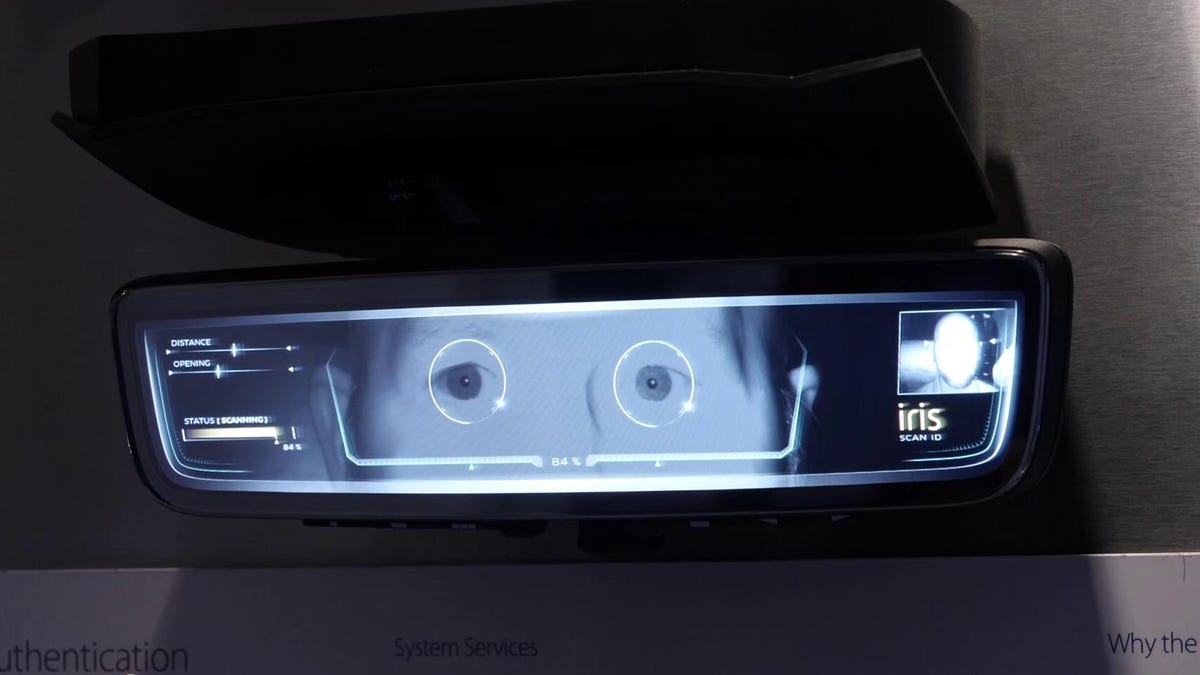Rearview mirrors are about to get an upgrade
More than showing you what's back there, it will help decide what to do about it.

Not that many years ago, the rearview mirror offered little more than an obstructed view of the rear of your car with a lot of glare thrown in at night. What's coming, though, will make it one of the most powerful screens in your world.
Gentex is the largest supplier of automotive mirrors so it has an outsized role in their future. One of its most promising plans is a system that detects a blind-spot threat and automatically shows a video feed of it in part of the mirror. Video rearview mirrors aren't entirely new -- the Cadillac CT6 offered the first one, also from Gentex, a couple of years ago -- but actively presenting blind-spot video feeds is an intriguing step forward.
This Gentex prototype goes a long way toward making blind-spot awareness more natural and powerful.
Until I get on the road with this tech, I can only say that the static demo of it seemed like a faster, more cohesive way of knowing what lurks where you can't see.
A recent AAA Foundation survey found that some 30 percent of drivers now rely solely on blind-spot monitoring tech when they make all or many of their lane changes. That's disturbing given that today's blind-spot tech usually consists of a couple of blinking LEDs and disembodied beeps that urge you to turn your head and figure out what the sensor just spotted. A recent study of the effectivenes of blind-spot monitoring tech found it reduces lane-change crash involvement by 14 percent in cars that have it, but that seems a far cry from what it could do if it were an automatic video system.
The idea of separate mirrors to see behind a car from the driver's seat is rather antiquated. This hybrid-view concept stitches together one view from three rear-facing cameras.
The same tech that makes blind-spot detection better can also create a "hybrid view" mirror that stitches the rear and side cameras together into a panoramic feed of what's behind you. The tricky part of doing that is presenting an accurate aspect ratio and field of view, otherwise it could actually make a driver's decisions worse. Gentex seems to have done an elegant job in its prototype, making the back of a car seem invisible while eschewing the distorted, unnatural view we associate with backup cameras.
If you're wondering what happens when a video mirror blows a fuse or does what all electronics sometimes do -- namely choke -- Gentex envisions all future video mirrors will retain traditional reflective glass as well. And federal regulations still require that, anyway.
The company also wants a piece of the rapidly growing identification market for cars. A rearview mirror with iris scanning to "enroll" you in your vehicle is not unlike Apple's FaceID, but in a car it's part of anticipating needs like temperature, entertainment and next destination based on who's in the driver's seat. Can you do this via smartphone detection? Perhaps, but for some use cases, true biometric identification rather than an inferred identity from a device's proximity will mean the difference between possible and potential. Targeted in-car commerce, advertising and tailored insurance are some areas that come to mind. While that may sound intrusive now, they could evolve to make time in a car more valuable.
The rearview mirror seems like an ideal place to install iris scan identification. What carmakers and their partners do with that needs to be handled with a deft touch.
Finally, most tech products today include some kind of smart home integration and Gentex sees that for its HomeLink wireless garage-door tech, tech you probably already have in your current car. It hardly deserves to be called smart home tech as is, but a new version named HomeLink Connect seeks to bridge your smart home platform and your car, making smart home controls available via car screen or voice system. Gentex has its work cut out for it here against platforms including Amazon, Google and Apple, which already have deep roots in the smart home and let you use your phone as the in-car hardware.

